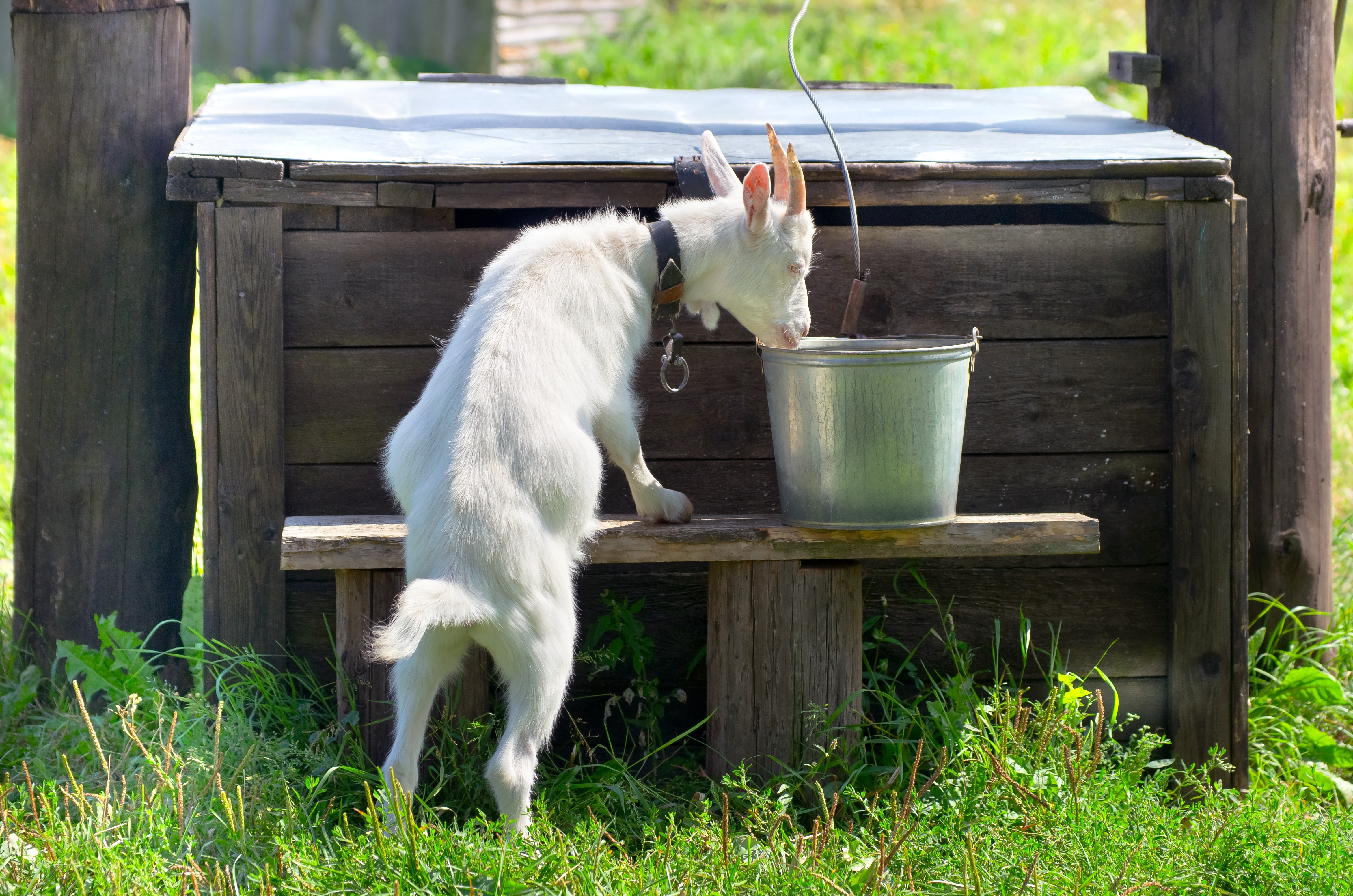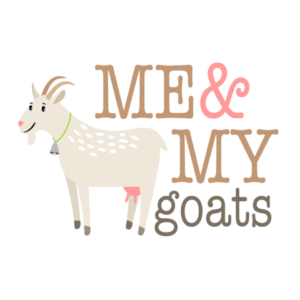
Just like any newborn or young animal, baby goats, or kids, require a well-balanced diet. Contrary to popular belief, goats cannot eat anything.
Kids from birth until 2.5 times their birth weight will be mainly drinking milk with access to hay starting at two weeks old. Once weaned, kids will primarily eat hay, whole grains, and alfalfa or chaffhaye. Treats can include select fresh fruits and vegetables.
To truly care for your kid, it essential to choose the right kinds of milk, grains, and treats to feed them. Goats are prone to indigestion, which can easily lead to death. To avoid sickness, or worse, here are some guidelines for feeding your kid.
Bottle-Feeding for Newborns

Ideally, your kid should receive raw goat milk, however, there are various alternatives that can still provide sufficient nourishment. When fresh goat milk is not available, you can turn to raw cow’s milk, but it must be raw. Vitamin D cow’s milk has a different fat content level than raw goat or cow milk, which will leave your young goat malnourished. Another suitable option is to purchase a milk replacement that is specifically formulated for goats.
Depending on your kid and the area in which you live, it is best to consult your veterinarian on which goat formulated milk replacer you should use.
Regardless of which milk option you choose, maintaining a healthy feeding schedule is just as important.
| Age | Amount of liquid per feeding | Amount of feedings per day |
|---|---|---|
| Day 1 | Colostrum, 10% of body weight | |
| Day 2-10 | 4-6 ounces | 4-5 times |
| Day 11-21 | 7-12 ounces | 3-4 times |
| Day 21+ | 12-16 ounces | 3 times |
It’s normal for smaller kids to eat at the lower end of the range and larger kids to eat at the higher end of the range. Try to evenly space feedings throughout the day to avoid bloating and indigestion.
At two weeks old, you can begin introducing hay into their diet. When the kid is eating 30 grams of solid food a day or is 2.5 times their birth weight, you can begin weaning them from milk. There are two methods to weaning: reduce feeding times in the day or reduce the amount of milk at feeding times. Typically, the slower you wean, the least amount of digestion problems your kid will experience. Throughout the weaning process, provide plenty of drinking water and hay.
Hay, Alfalfa, or Chaffhaye

Goats love hay! This will be the first solid food most goats will ever try. Hay can be freely provided to them because they will only eat what they need. A good rule of thumb is to leave 2-4 lbs of hay out for your goat a day.
Alfalfa is a type of grass that provides more protein, vitamins, and minerals than hay. Because alfalfa can be pretty messy, many goat owners recommend getting alfalfa pellets. Alfalfa and hay are pretty similar, so if you are feeding both to your goat on the same day, the total weight should be 2-4 pounds of feed.
Less commonly known is chaffhaye. Chaffhaye is alfalfa that was cut early and then sprayed with molasses. Specific bacteria (Bacillus Subtillis) is also added to the chaffhaye before allowing the grass to ferment. The fermentation process allows the healthy bacteria to thrive and adds additional nutrients, thus aiding in the digestive process. Considering that all goats struggle with maintaining healthy digestion, this is a great resource of food to introduce to your kid as soon as they are weaned off milk.
The sooner your goat can get its essential nutrients, the better!
Grains in Moderation
Grains can be a great addition to a kid or adult goat’s diet. These grains can be corn, barley, wheat, oats, milo, and rye.
A word of warning: eating too many grains can kill your goat!
A safe amount to feed your kid is about half a cup of grain a day. When in doubt, consult your veterinarian.
There are four types of grains: whole, pelleted, rolled, and texturized. Any of these grains will be good for your goat. If your kid is younger than six weeks old and/or has struggling rumen, you may need to process the grains before feeding them to your kid.
- Whole Grains: Natural and unprocessed seed heads.
- Pelleted Grains: Milled grains or byproducts that are shaped into a pellet form and mixed with a binding agent to make sure it keeps its form.
- Rolled Grains: Natural and unprocessed, much like whole grains, but they have been rolled flat.
- Texturized Grains: Similar to rolled, but with other grains mixed in for added nutrition.
Source
Every Goat Wants A Treat
Fresh fruits and vegetables are the way to a goat’s heart. However, there are some fruits and vegetables that you should never feed your goat.
Safe Foods
- Watermelon
- Pears
- Bananas
- Peaches
- Grapes
- Carrots
- Lettuce
- Spinach
- Squash
- Pumpkin
- Celery
Source
Never Foods
- Avocado
- Azaleas
- Chocolate
- Plants with oxalates such as kale
- Any nightshade vegetable
- Holly trees or bushes
- Lilacs
- Lily of the valley
- Milkweed
- Rhubarb leaves
- Wild cherries
Source
Supplements
We aren’t the only ones who like to fortify and enhance the foods that we eat. Many goat owners will buy loose minerals to sprinkle into their goat’s hay or alfalfa. There are also mineral blocks that goats can lick to get extra nutrients. (Think of salt licks but full of minerals!) Regardless of which option you choose, this is a positive way to increase the essential vitamins and minerals goats need. This is especially helpful if you live in an area where the soil lacks sufficient nutrients, thus producing grasses and grains that won’t fully nourish your goat.
To increase the benefits of the loose mineral powder, it is recommended to sprinkle baking soda into the hay or alfalfa as well. Baking soda will reduce bloating and assist digestion.
Another easy way to boost your goat’s nutrient intake is to put a little bit of apple cider vinegar into the goat’s water each day. Along with providing extra nutrients, the apple cider vinegar will boost your goat’s immune system and improve their haircoat.
